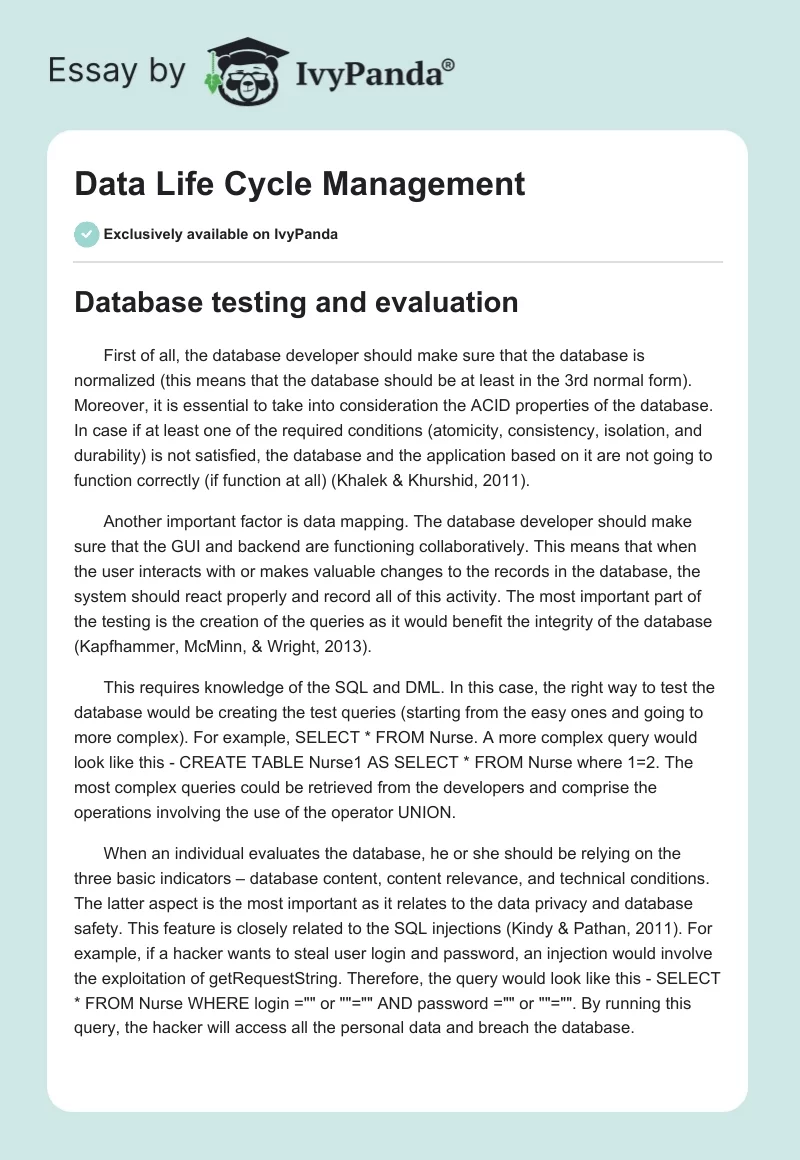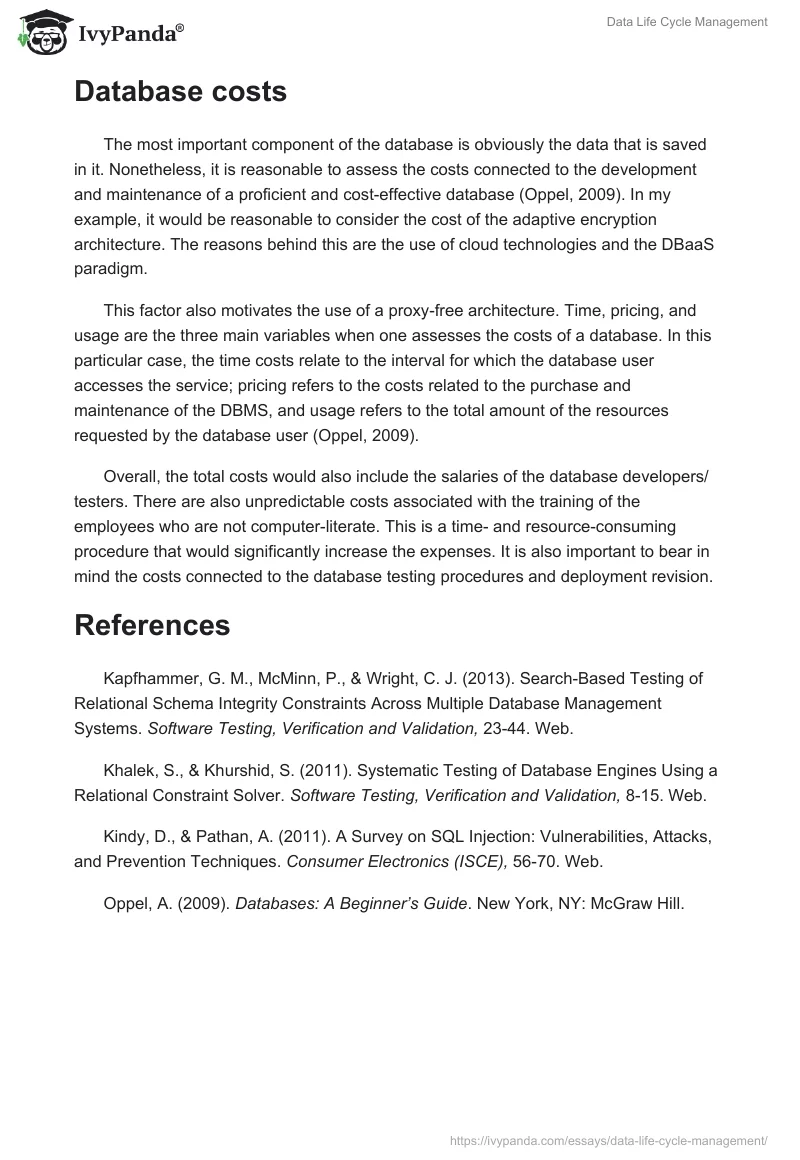Database testing and evaluation
First of all, the database developer should make sure that the database is normalized (this means that the database should be at least in the 3rd normal form). Moreover, it is essential to take into consideration the ACID properties of the database. In case if at least one of the required conditions (atomicity, consistency, isolation, and durability) is not satisfied, the database and the application based on it are not going to function correctly (if function at all) (Khalek & Khurshid, 2011).
Another important factor is data mapping. The database developer should make sure that the GUI and backend are functioning collaboratively. This means that when the user interacts with or makes valuable changes to the records in the database, the system should react properly and record all of this activity. The most important part of the testing is the creation of the queries as it would benefit the integrity of the database (Kapfhammer, McMinn, & Wright, 2013).
This requires knowledge of the SQL and DML. In this case, the right way to test the database would be creating the test queries (starting from the easy ones and going to more complex). For example, SELECT * FROM Nurse. A more complex query would look like this – CREATE TABLE Nurse1 AS SELECT * FROM Nurse where 1=2. The most complex queries could be retrieved from the developers and comprise the operations involving the use of the operator UNION.
When an individual evaluates the database, he or she should be relying on the three basic indicators – database content, content relevance, and technical conditions. The latter aspect is the most important as it relates to the data privacy and database safety. This feature is closely related to the SQL injections (Kindy & Pathan, 2011). For example, if a hacker wants to steal user login and password, an injection would involve the exploitation of getRequestString. Therefore, the query would look like this – SELECT * FROM Nurse WHERE login =”” or “”=”” AND password =”” or “”=””. By running this query, the hacker will access all the personal data and breach the database.
Database costs
The most important component of the database is obviously the data that is saved in it. Nonetheless, it is reasonable to assess the costs connected to the development and maintenance of a proficient and cost-effective database (Oppel, 2009). In my example, it would be reasonable to consider the cost of the adaptive encryption architecture. The reasons behind this are the use of cloud technologies and the DBaaS paradigm.
This factor also motivates the use of a proxy-free architecture. Time, pricing, and usage are the three main variables when one assesses the costs of a database. In this particular case, the time costs relate to the interval for which the database user accesses the service; pricing refers to the costs related to the purchase and maintenance of the DBMS, and usage refers to the total amount of the resources requested by the database user (Oppel, 2009).
Overall, the total costs would also include the salaries of the database developers/ testers. There are also unpredictable costs associated with the training of the employees who are not computer-literate. This is a time- and resource-consuming procedure that would significantly increase the expenses. It is also important to bear in mind the costs connected to the database testing procedures and deployment revision.
References
Kapfhammer, G. M., McMinn, P., & Wright, C. J. (2013). Search-Based Testing of Relational Schema Integrity Constraints Across Multiple Database Management Systems. Software Testing, Verification and Validation, 23-44. Web.
Khalek, S., & Khurshid, S. (2011). Systematic Testing of Database Engines Using a Relational Constraint Solver. Software Testing, Verification and Validation, 8-15. Web.
Kindy, D., & Pathan, A. (2011). A Survey on SQL Injection: Vulnerabilities, Attacks, and Prevention Techniques. Consumer Electronics (ISCE), 56-70. Web.
Oppel, A. (2009). Databases: A Beginner’s Guide. New York, NY: McGraw Hill.


